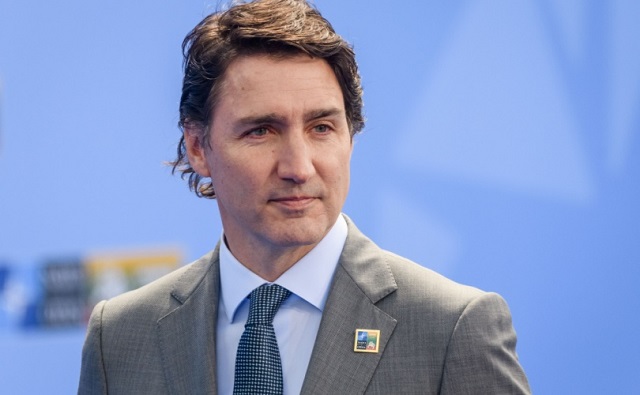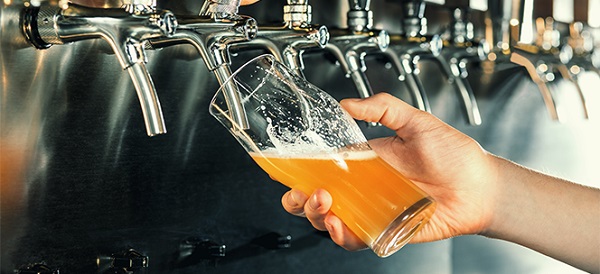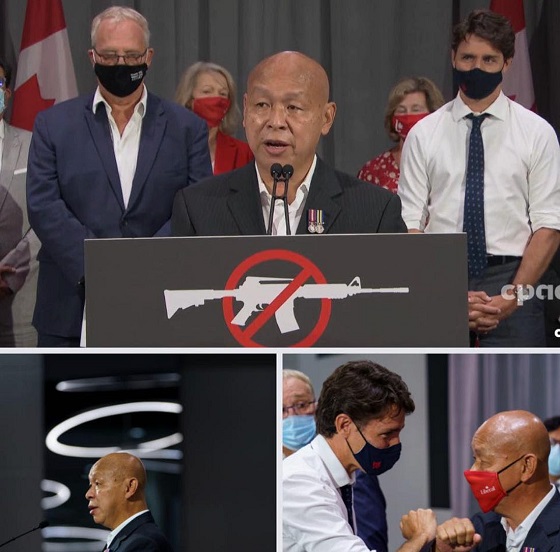Fraser Institute
Cost of Ottawa’s gun ban fiasco may reach $6 billion

From the Fraser Institute
By Gary Mauser
According to the government, it has already spent $67.2 million, which includes compensation for 60 federal employees working on the “buyback,” which still doesn’t exist.
Four years ago, the Trudeau government banned “1,500 types” of “assault-style firearms.” It’s time to ask if public safety has improved as promised.
This ban instantly made it a crime for federally-licensed firearms owners to buy, sell, transport, import, export or use hundreds of thousands formerly legal rifles and shotguns. According to the government, the ban targets “assault-style weapons,” which are actually classic semi-automatic rifles and shotguns that have been popular with hunters and sport shooters for more than 100 years. When announcing the ban, the prime minister said the government would confiscate the banned firearms and their legal owners would be “grandfathered” or receive “fair compensation.” That hasn’t happened.
As of October 2024, the government has revealed no plans about how it will collect the newly-banned firearms nor has it made any provisions for compensation in any federal budget since the announcement in 2020. Originally, the government enacted a two-year amnesty period to allow compliance with the ban. This amnesty expired in April 2022 and has been twice extended, first to Oct. 30, 2023, then to Oct. 30, 2025.
Clearly, the ban—which the government calls a “buyback”—has been a gong show from the beginning. Since Trudeau’s announcement four years ago, virtually none of the banned firearms have been surrendered. The Ontario government refuses to divert police resources to cooperate with this federal “buyback” scheme. The RCMP’s labour union has said it’s a “misdirected effort when it comes to public safety.” The Canadian Sporting Arms & Ammunition Association, which represents firearms retailers, said it will have “zero involvement” in helping confiscate these firearms. Even Canada Post wants nothing to do with Trudeau’s “buyback” plan. And again, the government has revealed no plan for compensation—fair or otherwise.
And yet, according to the government, it has already spent $67.2 million, which includes compensation for 60 federal employees working on the “buyback,” which still doesn’t exist.
It remains unclear just how many firearms the 2020 ban includes. The Parliamentary Budget Officer estimates range between 150,000 to more than 500,000, with an estimated total value between $47 million and $756 million. These costs only include the value of the confiscated firearms and exclude the administrative costs to collect them and the costs of destroying the collected firearms. The total cost of this ban to taxpayers will be more than $4 billion and possibly more than $6 billion.
Nevertheless, while the ban of remains a confusing mess, after four years we should be able to answer one key question. Has the ban made Canadians safer?
According to Statistics Canada, firearm-related violent crime swelled by 10 per cent from 2020 to 2022 (the latest year of comparable data), from 12,614 incidents to 13,937 incidents. And in “2022, the rate of firearm-related violent crime was 36.7 incidents per 100,000 population, an 8.9% increase from 2021 (33.7 incidents per 100,000 population). This is the highest rate recorded since comparable data were first collected in 2009.”
Nor have firearm homicides decreased since 2020. Perhaps this is because lawfully-held firearms are not the problem. According to StatsCan, “the firearms used in homicides were rarely legal firearms used by their legal owners.” However, crimes committed by organized crime have increased by more than 170 per cent since 2016 (from 4,810 to 13,056 crimes).
Meanwhile, the banned firearms remain locked in the safes of their legal owners who have been vetted by the RCMP and are monitored nightly for any infractions that might endanger public safety.
Indeed, hunters and sport shooters are among the most law-abiding people in Canada. Many Canadian families and Indigenous peoples depend on hunting to provide food for the family dinner table through legal harvesting, with the added benefit of getting out in the wilderness and spending time with family and friends. In 2015, hunting and firearm businesses alone contributed more than $5.9 billion to Canada’s economy and supported more than 45,000 jobs. Hunters are the largest contributors to conservation efforts, contributing hundreds of millions of dollars to secure conservation lands and manage wildlife. The number of licensed firearms owners has increased 17 per cent since 2015 (from 2.026 million to 2.365 million) in 2023.
If policymakers in Ottawa and across the country want to reduce crime and increase public safety, they should enact policies that actually target criminals and use our scarce tax dollars wisely to achieve these goals.
Author:
Alberta
Energy sector will fuel Alberta economy and Canada’s exports for many years to come

From the Fraser Institute
By any measure, Alberta is an energy powerhouse—within Canada, but also on a global scale. In 2023, it produced 85 per cent of Canada’s oil and three-fifths of the country’s natural gas. Most of Canada’s oil reserves are in Alberta, along with a majority of natural gas reserves. Alberta is the beating heart of the Canadian energy economy. And energy, in turn, accounts for one-quarter of Canada’s international exports.
Consider some key facts about the province’s energy landscape, as noted in the Alberta Energy Regulator’s (AER) 2023 annual report. Oil and natural gas production continued to rise (on a volume basis) in 2023, on the heels of steady increases over the preceding half decade. However, the dollar value of Alberta’s oil and gas production fell in 2023, as the surging prices recorded in 2022 following Russia’s invasion of Ukraine retreated. Capital spending in the province’s energy sector reached $30 billion in 2023, making it the leading driver of private-sector investment. And completion of the Trans Mountain pipeline expansion project has opened new offshore export avenues for Canada’s oil industry and should boost Alberta’s energy production and exports going forward.
In a world striving to address climate change, Alberta’s hydrocarbon-heavy energy sector faces challenges. At some point, the world may start to consume less oil and, later, less natural gas (in absolute terms). But such “peak” consumption hasn’t arrived yet, nor does it appear imminent. While the demand for certain refined petroleum products is trending down in some advanced economies, particularly in Europe, we should take a broader global perspective when assessing energy demand and supply trends.
Looking at the worldwide picture, Goldman Sachs’ 2024 global energy forecast predicts that “oil usage will increase through 2034” thanks to strong demand in emerging markets and growing production of petrochemicals that depend on oil as the principal feedstock. Global demand for natural gas (including LNG) will also continue to increase, particularly since natural gas is the least carbon-intensive fossil fuel and more of it is being traded in the form of liquefied natural gas (LNG).
Against this backdrop, there are reasons to be optimistic about the prospects for Alberta’s energy sector, particularly if the federal government dials back some of the economically destructive energy and climate policies adopted by the last government. According to the AER’s “base case” forecast, overall energy output will expand over the next 10 years. Oilsands output is projected to grow modestly; natural gas production will also rise, in part due to greater demand for Alberta’s upstream gas from LNG operators in British Columbia.
The AER’s forecast also points to a positive trajectory for capital spending across the province’s energy sector. The agency sees annual investment rising from almost $30 billion to $40 billion by 2033. Most of this takes place in the oil and gas industry, but “emerging” energy resources and projects aimed at climate mitigation are expected to represent a bigger slice of energy-related capital spending going forward.
Like many other oil and gas producing jurisdictions, Alberta must navigate the bumpy journey to a lower-carbon future. But the world is set to remain dependent on fossil fuels for decades to come. This suggests the energy sector will continue to underpin not only the Alberta economy but also Canada’s export portfolio for the foreseeable future.
Automotive
Electric cars just another poor climate policy

From the Fraser Institute
The electric car is widely seen as a symbol of a simple, clean solution to climate change. In reality, it’s inefficient, reliant on massive subsidies, and leaves behind a trail of pollution and death that is seldom acknowledged.
We are constantly reminded by climate activists and politicians that electric cars are cleaner, cheaper, and better. Canada and many other countries have promised to prohibit the sale of new gas and diesel cars within a decade. But if electric cars are really so good, why would we need to ban the alternatives?
And why has Canada needed to subsidize each electric car with a minimum $5,000 from the federal government and more from provincial governments to get them bought? Many people are not sold on the idea of an electric car because they worry about having to plan out where and when to recharge. They don’t want to wait for an uncomfortable amount of time while recharging; they don’t want to pay significantly more for the electric car and then see its used-car value decline much faster. For people not privileged to own their own house, recharging is a real challenge. Surveys show that only 15 per cent of Canadians and 11 per cent of Americans want to buy an electric car.
The main environmental selling point of an electric car is that it doesn’t pollute. It is true that its engine doesn’t produce any CO₂ while driving, but it still emits carbon in other ways. Manufacturing the car generates emissions—especially producing the battery which requires a large amount of energy, mostly achieved with coal in China. So even when an electric car is being recharged with clean power in BC, over its lifetime it will emit about one-third of an equivalent gasoline car. When recharged in Alberta, it will emit almost three-quarters.
In some parts of the world, like India, so much of the power comes from coal that electric cars end up emitting more CO₂ than gasoline cars. Across the world, on average, the International Energy Agency estimates that an electric car using the global average mix of power sources over its lifetime will emit nearly half as much CO₂ as a gasoline-driven car, saving about 22 tonnes of CO₂.
But using an electric car to cut emissions is incredibly ineffective. On America’s longest-established carbon trading system, you could buy 22 tonnes of carbon emission cuts for about $660 (US$460). Yet, Ottawa is subsidizing every electric car to the tune of $5,000 or nearly ten times as much, which increases even more if provincial subsidies are included. And since about half of those electrical vehicles would have been bought anyway, it is likely that Canada has spent nearly twenty-times too much cutting CO₂ with electric cars than it could have. To put it differently, Canada could have cut twenty-times more CO₂ for the same amount of money.
Moreover, all these estimates assume that electric cars are driven as far as gasoline cars. They are not. In the US, nine-in-ten households with an electric car actually have one, two or more non-electric cars, with most including an SUV, truck or minivan. Moreover, the electric car is usually driven less than half as much as the other vehicles, which means the CO₂ emission reduction is much smaller. Subsidized electric cars are typically a ‘second’ car for rich people to show off their environmental credentials.
Electric cars are also 320–440 kilograms heavier than equivalent gasoline cars because of their enormous batteries. This means they will wear down roads faster, and cost societies more. They will also cause more air pollution by shredding more particulates from tire and road wear along with their brakes. Now, gasoline cars also pollute through combustion, but electric cars in total pollute more, both from tire and road wear and from forcing more power stations online, often the most polluting ones. The latest meta-study shows that overall electric cars are worse on particulate air pollution. Another study found that in two-thirds of US states, electric cars cause more of the most dangerous particulate air pollution than gasoline-powered cars.
These heavy electric cars are also more dangerous when involved in accidents, because heavy cars more often kill the other party. A study in Nature shows that in total, heavier electric cars will cause so many more deaths that the toll could outweigh the total climate benefits from reduced CO₂ emissions.
Many pundits suggest electric car sales will dominate gasoline cars within a few decades, but the reality is starkly different. A 2023-estimate from the Biden Administration shows that even in 2050, more than two-thirds of all cars globally will still be powered by gas or diesel.
Source: US Energy Information Administration, reference scenario, October 2023
Fossil fuel cars, vast majority is gasoline, also some diesel, all light duty vehicles, the remaining % is mostly LPG.
Electric vehicles will only take over when innovation has made them better and cheaper for real. For now, electric cars run not mostly on electricity but on bad policy and subsidies, costing hundreds of billions of dollars, blocking consumers from choosing the cars they want, and achieving virtually nothing for climate change.
-

 Alberta2 days ago
Alberta2 days agoOwner sells gas for 80 cents per litre to show Albertans how low prices ‘could’ be
-

 2025 Federal Election2 days ago
2025 Federal Election2 days agoMORE OF THE SAME: Mark Carney Admits He Will Not Repeal the Liberal’s Bill C-69 – The ‘No Pipelines’ Bill
-

 Break The Needle2 days ago
Break The Needle2 days agoWhy psychedelic therapy is stuck in the waiting room
-

 Automotive2 days ago
Automotive2 days agoTrump Must Act to Halt the Tesla Terror Campaign
-

 2025 Federal Election2 days ago
2025 Federal Election2 days agoThree cheers for Poilievre’s alcohol tax cut
-

 2025 Federal Election1 day ago
2025 Federal Election1 day ago‘Coordinated and Alarming’: Allegations of Chinese Voter Suppression in 2021 Race That Flipped Toronto Riding to Liberals and Paul Chiang
-

 Alberta2 days ago
Alberta2 days agoEnergy sector will fuel Alberta economy and Canada’s exports for many years to come
-

 2025 Federal Election2 days ago
2025 Federal Election2 days agoDon’t let the Liberals fool you on electric cars








